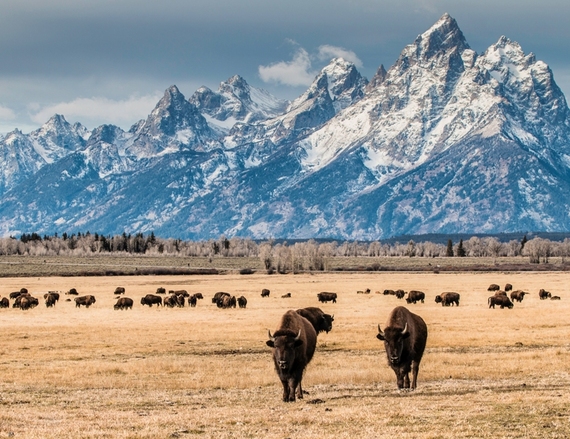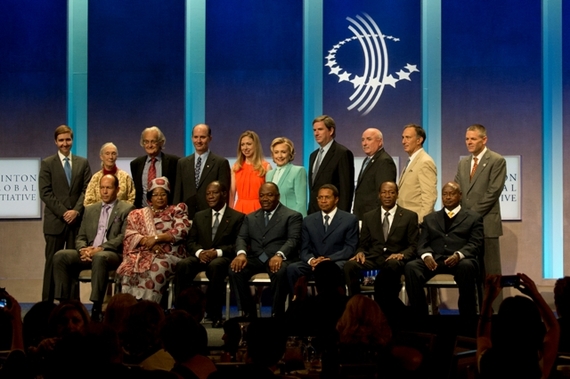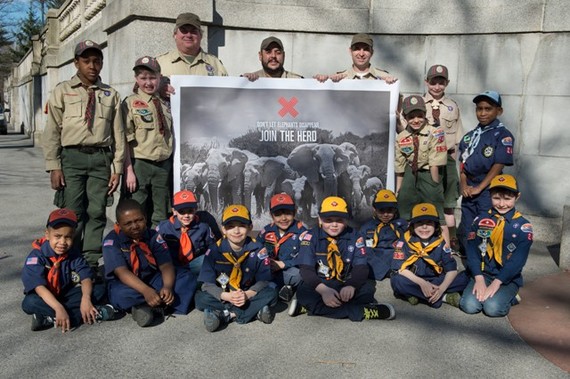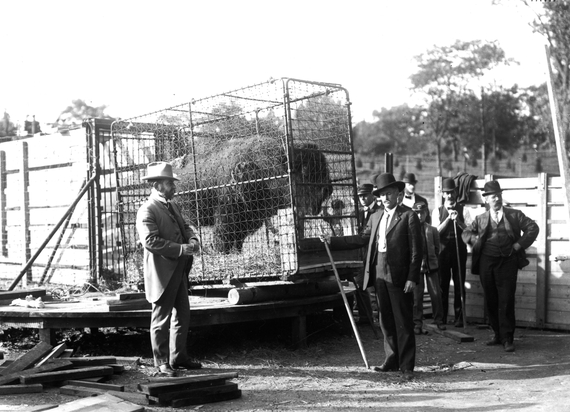In 1907 the American Bison Society arranged for 15 bison donated by the New York Zoological Society (NYZS) to be shipped by railway from the Bronx Zoo to the Wichita National Forest and Game Preserve in Oklahoma to begin the work of restoring the Western Plains' depleted bison population - reduced in the preceding half-century from well over 20 million to a mere 23 animals in the wild.

In the late 19th century, bison numbers in the American West plummeted from well over 20 million to a mere 23 animals in the wild. Photo by Jeff Burrell ©WCS.
The shipment was an extraordinary achievement - the start of what would become the first successful organized conservation effort to save a species from extinction. In the ensuing decades the wild bison population would rebound to close to 25,000, with another quarter million maintained as managed herds in every state in the union. So inspiring is the end result that one could be forgiven in forgetting the work required to make it happen.
Two years earlier, in 1905, Bronx Zoo Director William T. Hornaday brought together a group of diverse stakeholders to form the American Bison Society (ABS). With President Theodore Roosevelt as honorary president, ABS set out to prevent the extinction of the American bison by establishing a number of small herds in widely separated parts of the country.
Anticipating the challenge, Hornaday had already lobbied the Congress to set aside federal land in Oklahoma for the purpose of creating game preserves (as ABS would later do for land in South Dakota and Nebraska). Hornaday now gathered available bison from around the northeast to establish a small population at the Bronx Zoo, operated by NYZS (today the Wildlife Conservation Society, or WCS).
In 1907 the American Bison Society arranged for 15 bison donated by the New York Zoological Society (now the Wildlife Conservation Society, or WCS) to be shipped by railway from the Bronx Zoo to the Wichita National Forest and Game Preserve in Oklahoma. Photo ©WCS.
To defray the cost of transporting the animals west, the ABS worked with both Wells Fargo and American Express. The public was also engaged. Between 1908 and 1909, conservation-minded individuals from 29 states - as well as the District of Columbia, England, Canada, and France - made personal contributions, raising more than $10,500 in support of the Montana National Bison herd.
Hornaday juggled these disparate elements of his campaign expertly. Decades before Rachel Carson's passionate call for the protection of our forests, streams, and pastures in her book Silent Spring, Hornaday helped to establish a veritable blueprint for modern environmental movement-building - one that he would apply again and again to achieve the vision and goals of the zoological society.
As WCS turns 120 this week, it continues that tradition of effective conservation movement building begun a century ago. The past two years have seen perhaps the most ambitious and successful of these efforts with the creation of the 96 Elephants campaign. The campaign takes its name from the roughly 35,000 elephants being killed across Africa each year for their ivory - a figure that translates into 96 elephants per day, or one every 15 minutes.

With the slaughter of African elephants reaching 35,000 a year (96 a day), WCS established the 96 Elephants campaign in 2013, joining leaders of elephant range states, NGO partners, and the Clinton Global Initiative (above) in a commitment to stop the killing, stop the trafficking, and stop the demand for elephant ivory. Photo by Julie Larsen Maher ©WCS.
Responding to the devastating poaching crisis, the 96 Elephants campaign developed a three-prong strategy to curtail the illegal ivory trade: stop the killing, stop the trafficking, and stop the demand. Central to this effort has been an acknowledgement that the United States has itself played a large role in driving demand for ivory.
With poached ivory being sold and traded as antique (the latter is protected by law, but the two are very difficult to distinguish), a tightening of restrictions on ivory purchases and sales in the United States needed to take place.
To achieve that goal, the 96 Elephants campaign followed Hornaday's tested movement strategy: building coalitions with public and private partners (including more than 120 members of the Association of Zoos and Aquariums), raising public awareness, and working with government leaders.

To pursue legislative action to restrict ivory sales in the United States, the 96 Elephants campaign has followed Hornaday's tested movement strategy: building coalitions with public and private partners, raising public awareness, and working with government leaders. Photo by Julie Larsen Maher ©WCS.
The results would make Hornaday proud. New York and New Jersey successfully established ivory bans in the summer of 2014. Similar efforts are now underway in California, Connecticut, Massachusetts, and elsewhere.
The success of the 96 Elephants campaign is not merely another example of what's old being new again. It demonstrates that tried and true organizing principles - clearly articulated goals grounded upon public education (including a lot of pavement-pounding), the building of partnerships and alliances, and passionate advocacy at all levels of government - can and should be the basis for other pressing environment and conservation priorities of our time.
In the coming years, WCS hopes to continue to apply this movement strategy for the protection threatened species. In so doing we are not merely working to protect great iconic wildlife like the bison and the elephant. We are developing a constituency for conservation that will continue the fight for future generations as we do now 100 years after William Hornaday's inspiring example.
----------------------------------------------------------
John Calvelli is Executive Vice President for Public Affairs at WCS (Wildlife Conservation Society) and Director of the 96 Elephants Campaign. Follow John on Twitter at: @JohnCalvelli.

